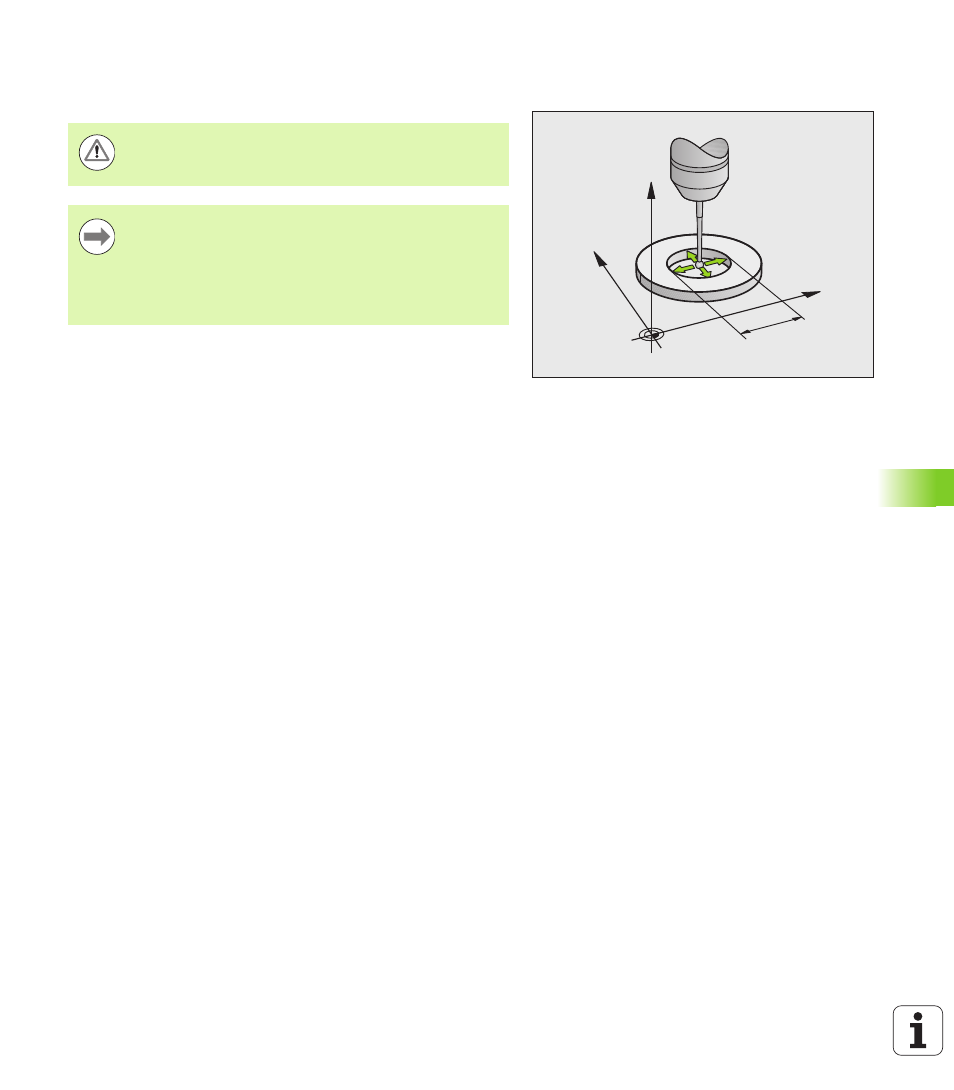6 calibr a ting a 3-d t o uc h pr obe – HEIDENHAIN TNC 128 (77184x-01) User Manual
Page 299

HEIDENHAIN TNC 128
299
1
1
.6 Calibr
a
ting a 3-D t
o
uc
h pr
obe
Calibrating the effective radius and
compensating center offset
After the touch probe is inserted, it normally needs to be aligned
exactly with the spindle axis. The calibration function can determine
the offset between touch-probe axis and spindle axis by probing from
opposite orientations (rotation by 180°) and can compute the
compensation.
The calibration routine varies depending on how your touch probe can
be oriented:
No orientation possible or orientation possible in only one direction:
The TNC executes eight probing operations and determines only the
effective ball tip radius (column R in tool.t).
Orientation possible in two directions (e.g. HEIDENHAIN touch
probes with cable): The TNC executes eight probing operations,
rotates the touch probe by 180° and then executes four more
probing operations. The center offset (CAL_OF in tchprobe.tp) is
determined in addition to the radius by probing from opposite
orientations.
Any orientation possible (e.g. HEIDENHAIN infrared touch probes):
For probing routine, see "orientation possible in two directions."
When calibrating the ball tip radius, the TNC executes an automatic
probing routine. During the first probing cycle, the TNC determines the
center of the calibration ring or stud (coarse measurement) and
positions the touch probe in the center. Then the ball tip radius is
determined during the actual calibration process (fine measurement).
If the touch probe allows probing from opposite orientations, the
center offset is determined during another cycle.
The characteristic of whether and how your touch probe can be
oriented is already defined in HEIDENHAIN touch probes. Other touch
probes are configured by the machine tool builder.
Y
X
Z
10
HEIDENHAIN grants a warranty for the function of the
touch probe cycles only if HEIDENHAIN touch probes are
used.
The center offset can be determined only with a suitable
touch probe.
If you want to calibrate using the outside of an object, you
need to preposition the touch probe above the center of
the calibration sphere or calibration pin. Ensure that the
touch points can be approached without collision.
